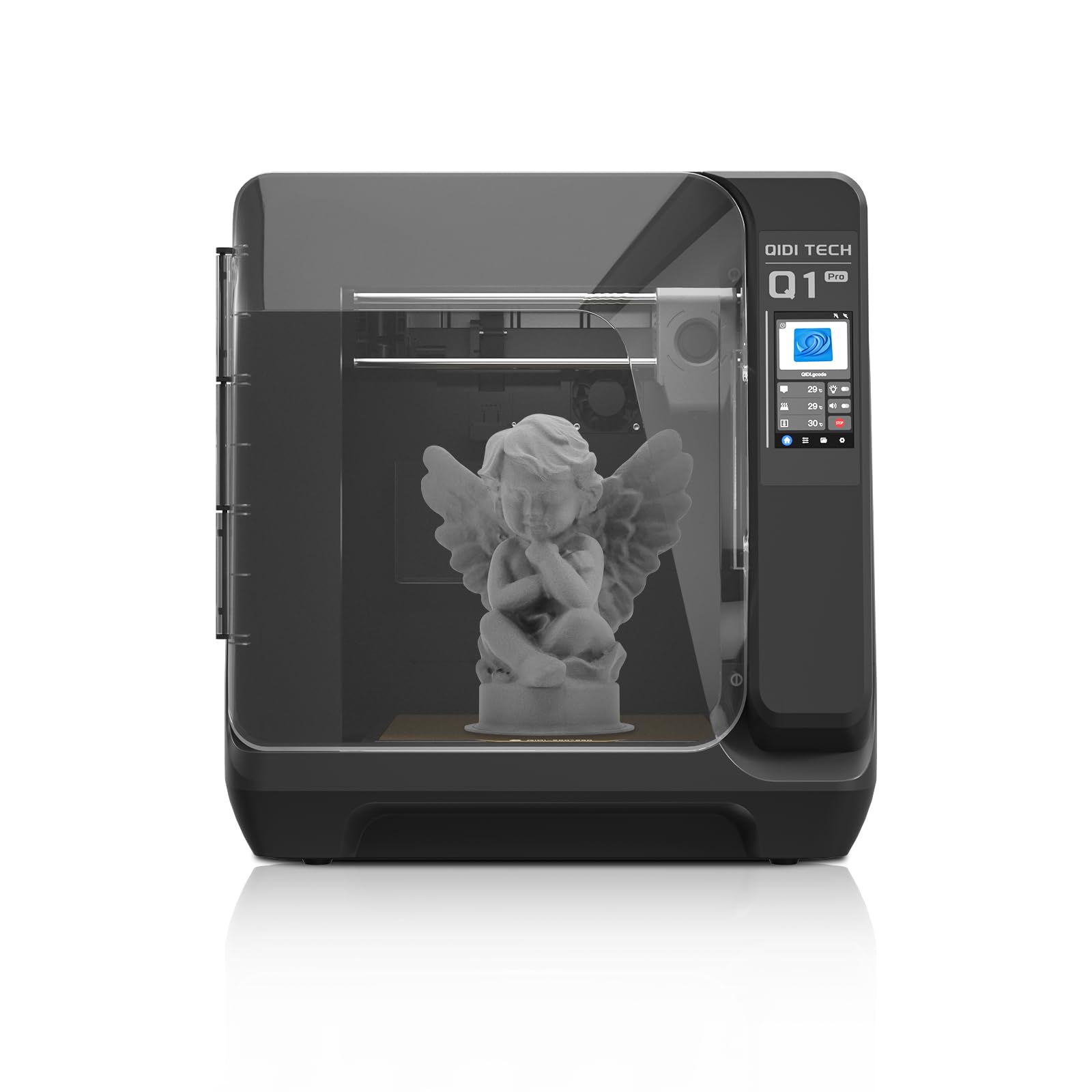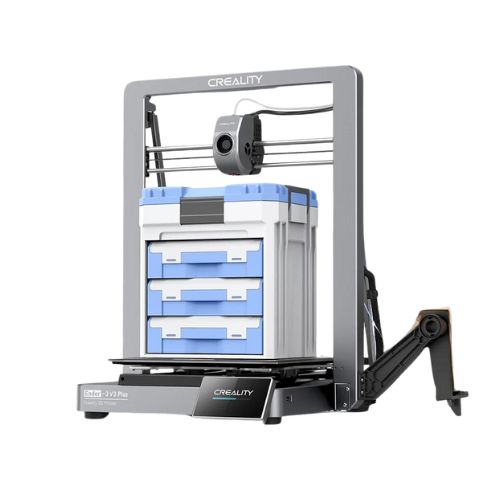Compare Q1 PRO vs Ender 3 V3 Plus
Comparison between the best 3D printers
Choose the best 3D printer at the best price. The cheapest 3D printers are here.
Buy a 3D printer here with 3D Fila.
 |
 |
|
| Model | Q1 PRO[BUY Q1 PRO] |
Ender 3 V3 Plus |
| Printing Material | Filament | Filament |
| Buy Filament for QIDI Q1 PRO | Buy Filament forCreality Ender 3 V3 Plus | |
| Estimated price | $449,00 | $479,00 |
| Manufacturer | QIDI | Creality |
| Release Year | 2024 | 2024 |
| Print Volume [mm] | 245x245x245 | 300x300x330 |
| Printer Size [mm] | 467x477x489 | 410x445x577 |
| Weight [kg] | 20 | 11,5 |
| Power Loss Recovery | YES | YES |
| Enclosed printer | YES | NO |
| Bed Leveling | Automatic | Automatic |
| Filament End Sensor | YES | YES |
| Bed type | Heated | Heated |
| Power supply system | Direct Drive | Direct Drive |
| Standard nozzle | 0,4 | 0,4 |
| Maximum Nozzle Temperature [°C] | 350 | 300 |
| Maximum Bed Temperature [°C] | 120 | 100 |
| Maximum printing speed [mm/s] | 600 | 600 |
| Filament holder | YES | YES |
| Camera for supervision | YES | YES |
| Recommended filaments | PLA、ABS、ASA、PETG、TPU、PC、PA、PA-CF、PET-CF、PAHT-CF etc. | PLA, TPU(95A), PETG, ABS, PLA-CF, PETG-CF, CR-carbon |
| Recommended slicers | QIDI Slicer/Cura/Simplify 3D/ORCA/PRUSA Slicer | Bambu Studio, Super Slicer, Cura, Prusa Slicer, Orca Slicer, Creality Print |
| Maximum Resolution [mm] | 0,1 | 0,1 |
| Processor | Cortex-A53,64-bit Processor | |
| Display | Touchscreen 4,3'' | Touchscreen 4,3'' |
| Power Supply | 350 W | 350 W |
| Connectivity | WiFi/USB Flash Drive/Ethernet Cable | Wifi, Bambu bus, Cartão SD |
| Operating systems | Windows, Linux, Macbook | Windows, Linux, Macbook |
| Date of registration in the system | 2024-07-09 | 2024-05-10 |
| Release date | 2024 | 2024 |
| Extra features | The QIDI Q1 Pro 3D printer stands out for its Core XY structure and heating chambers that reach up to 60ºC, ideal for advanced materials such as ABS and Nylon. It features Klipper firmware, an automatic leveling system, a high-flow extruder with a double metal nozzle and a hotend that reaches 350ºC. It offers connectivity via Wi-Fi, USB and Ethernet, as well as a 1080p camera for remote monitoring and an intuitive touchscreen for easy operation. | The Ender 3 V3 Plus incorporates significant advancements in 3D printing, featuring a build volume of 300300330mm. It features a Creality operating system based on Klipper, which supports advanced functions such as linear advance and input shaping, and allows precise adjustments through root access or expert mode. The CoreXZ motion system allows a printing speed of up to 600mm/s, with an acceleration of up to 20000mm/s². Equipped with a flexible build plate and a quick-change nozzle with a hardened steel tip, the printer offers simplified maintenance and increased durability. Additionally, the high-speed direct drive technology of the extruder, together with an automatic leveling system and filament end sensors, raise the standard for reliability and efficiency. Compatible with a variety of filaments, including PLA and PETG, the Ender 3 V3 Plus is a robust choice for 3D printing enthusiasts and professionals. |
| Support for multiple colors and materials (AMS and CFS) | NO | NO |
Notes * |
||
| Cost-benefit | 8 / 10 | 8 / 10 |
| Hardware | 5.4 / 10 | 3.6 / 10 |
| Tela | . | . |
| Print volume | 3 / 10 | 4 / 10 |
| Performance | 5 / 10 | 5 / 10 |
| [BUY Q1 PRO] |
Conclusion |
| In comparing the QIDI Q1 Pro and the Creality Ender 3 V3 Plus, both printers cater well to the needs of both enthusiasts and professionals, featuring significant advancements in 3D printing technology. The QIDI Q1 Pro offers a more enclosed design, which enhances temperature stability during printing, making it suitable for advanced materials such as ABS and Nylon. Its robust feature set includes a maximum nozzle temperature of 350°C, automatic bed leveling, and a high-flow extruder, making it versatile for various filament types. Additionally, the integrated camera and multiple connectivity options provide convenience for remote monitoring and operation. On the other hand, the Ender 3 V3 Plus shines with its larger print volume and high-speed capabilities, bolstered by its advanced operating system that supports personalized tuning and precision. Its open frame design promotes a straightforward setup, while still incorporating an automatic leveling system and a flexible build plate, enhancing usability and maintenance. While both printers are similarly priced and scored equally on cost-benefit, the choice ultimately depends on specific use cases. The QIDI Q1 Pro may be the better option for those requiring versatility and material compatibility in an enclosed environment. Conversely, the Ender 3 V3 Plus would likely appeal more to users seeking a larger build area combined with high-speed printing capabilities. Ultimately, both printers provide excellent value in the 3D printing market, catering to different priorities among users, such as material versatility versus print volume. |

